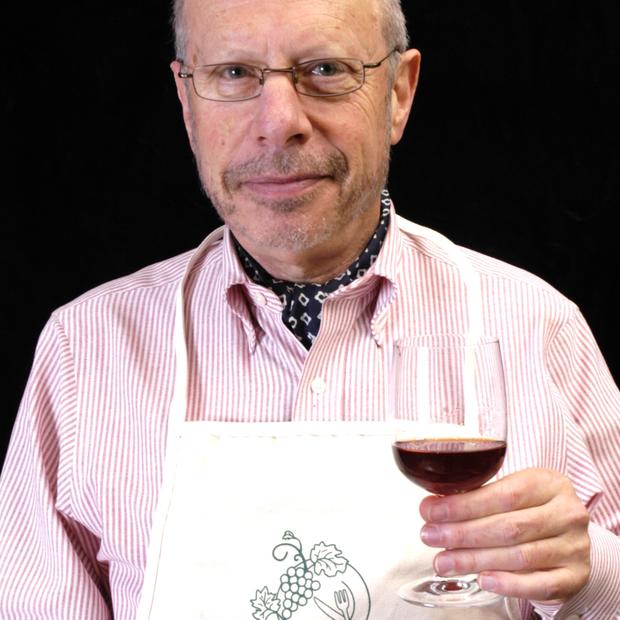Seattle knows Peter Lewis. He started Campagne in 1985 and Café Campagne nine years later, then sold them both in 2005 (to Simon Snellgrove) and went on to consult for restaurants like Bastille. He's a wine guy, Francophile, and friend of boutique winemakers in Burgundy, Bordeaux, and the Rhone as well as their American importers.
Also, it turns out, he's a writer, the latest to enter a crowded field of wine-related murder mysteries in which the victim is almost invariably the industry's favorite punching bag, a pompous wine critic. Plenty of motive, many suspects.
There's been a slew, a raft, a deluge of such books lately. Murder by the Glass is one of dozens to take place in Napa. The Merlot Murders takes place in Virginia. An Unholy Alliance, by Portland wine critic Judy Peterson-Nedry, is set in Oregon's Yamhill Valley. An entire platoon of scribes and scribblers (five are credited, but there were several others including me) developed a particularly lurid concept (incestuous twins, gothic graphics, the pH of decomposing bodies) for Kestrel Vintners and a whole series Kestrel sponsored, called The Merlot Mysteries. Where's the first body found? In a vat of wine.
The protagonist in these stories is usually an insider, a divorced (yes, always divorced) winemaker on the skids or a wine writer facing an impossible deadline — not a cop or a detective but a wine specialist who uses the particular talents of his or her profession to help solve the case. Gotta be a bit of an anti-hero (broke, overweight, impotent, whatever) but sympathique regardless; the reader has to care about and root for the protagonist. Everybody else is potentially a suspect or a false friend.
The genre allows the author to do some travel-and-nature writing (the golden colors of Burgundy's vineyards after harvest, the hoot of owls on Howell Mountain); repay some favors or settle some scores through cameo appearances by well-known industry figures; and make observations like "the French are vindictive and vengeful" by ascribing them to an otherwise sympathetic French character. There's usually a whiff, no more, of sex (a bite of caviar is a reminder of "how long it had been since I'd tasted a woman"), and a lot of wine.
Which brings us to Lewis's Dead in the Dregs (Counterpoint Press), which opens with, yes, a body in a vat of wine. And a missing, severed hand.
On one level, Dregs is a romp, a roman à clef game of Guess-Who that you play while following Lewis's narrator, a former Seattle sommelier named Babe Stern, around Napa. Who's the fatso character "Jordan Meyer"? Must be Harvey Steiman! The body, once inhabited by the person of wine writer "Robert Wilson"? Clearly Robert Parker! "Jacques Goldoni"? Parker's associate Pierre-Yves Rovani. This is fun!
Some 100 pages into the book, Stern flies off to Burgundy, where the wine and familiar faces become more interesting (There's Kermit Lynch! There's Per-Henrik Mansson! They're drinking Chambolle-Musigny!) even as the geography and the occasional French phrases get murkier. (The spire of St. Nicholas is in Beaune, not Meursault; an investigating magistrate is a juge d'instruction, not a juge d'enquête.)
Still, there are plenty of delicious moments and characters, most notably a French police colonel, Émile Sackheim, who always takes time to have a proper lunch. There's a Hispanic California vineyard manager annoyed by the young French intern who's come "to see how we Mexicans make wine." There's a drinking scene that introduces the term "Incoming" to denote a fruit-bomb of a wine.
Because it's a first-person story, the reader can't ever know more than the narrator. This means there's a lot of driving around, from winery to restaurant to hotel lobby, and a cascade of coincidences, starting with the imperious wine writer being Stern's brother-in-law, to get the right characters in place, at a wine bistro in Beaune where Stern can overhear a crucial conversation. On the other hand, Stern has a nose for more than caviar; in the action-packed finale, he comes up with critical evidence based on his sensory memory of a distinctive perfume that lingered in the victim's apartment.
Stern doesn't end up solving the case but does witness its grisly denouement, involving more gruesome murders, distilled body parts, sulfate poisoning, explosions, suicides, human blood used as a fining agent, and the grim, convoluted histories of several French wine-making families. When it's all over, Stern returns to California, where his ex-wife and their 10-year-old son await.
Is this the end, then? Not a chance. Having created his character, Lewis won't let go so easily; the subtitle of Dead in the Dregs, after all, is "A Babe Stern Mystery." Next stop, says Lewis: Babe returns to the scene of his first success as a sommelier — Seattle.
Lewis has three local readings and book-signings next month: at noon Sept. 8, Seattle Mystery Bookshop (113 Cherry St.); at 7 p.m. the same day, Third Place Books, 17171 Bothell Way N.E., Lake Forest Park; and at 7 p.m. Sept. 15, Elliott Bay Book Co., 1521 10th Ave.

